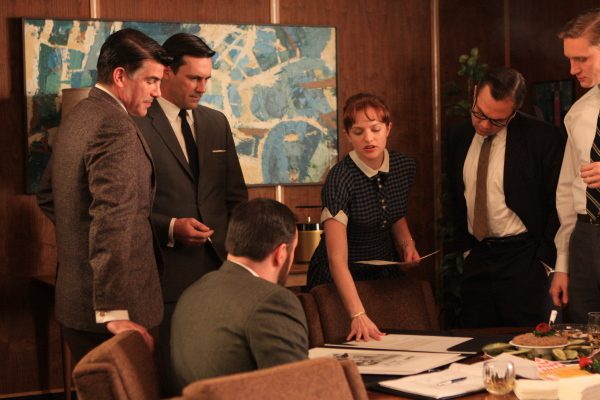Think of the most successful brands you know. Coca-Cola. Disney. FedEx. Shell.
They make an impact on you. They survive cultural shifts and changes in the market. They consistently tell a story that resonates with customers. The time and work that went into developing these long-lasting brands cannot be underestimated.
It’s well understood that customers embrace brands that connect with them on a deeper level. They also turn away from brands that appear flat, stagnant, or disorganized. In a competitive market, you can’t risk being overlooked by a customer who chooses your competitor’s brand instead of yours.
Bottom line considerations and quick turnarounds are top of mind concerns for every client. We strongly advise you reconsider the urge to rush the branding process or (even worse) use any service that claims to give you “high quality logos” for a fraction of the cost. Even if your company engages in quick transactions of low price widgets, your company’s brand is not a commodity. So don’t cheapen it. The long-term risk of getting it wrong will always exceed the upfront investment of doing it right.
The best process for branding involves a series of steps that fully defines your company. It is a discovery for a strategy to build brand equity. In subsequent blog posts we’ll dig deeper into the topics of messaging, positioning, and strategy. But with some exception, the process for designing a powerful brand follows these six steps.
1. Why, How, What & Who
In 2009 Simon Sinek challenged the business community to rethink the way they inspire their customers and companies to take action. His book Start With Why flipped the conventional approach to defining a company’s purpose. Instead of leading with the obvious exercise of what a company does, Sinek proposed that it’s more important to tell people why you do what you do.
People don’t buy what you do or even how you do it. In a crowded marketplace where competitors quickly adopt all of your company’s unique features and benefits, your Why inspires greater loyalty from everyone that comes in contact with your brand. The process of building an effective brand begins with a discovery process that starts with Why.
The team you enlist to help define your brand will continue to dig into questions about process (How), products and services (What), and the clients your serve (Who). Research into these critical components will give you a solid foundation to develop your positioning, messaging, brand identity, and business strategies.
To use a straightforward analogy, your company won’t successfully attract others until it has a strong understanding of self.
2. Survey the Terrain
Every client is unique. Every brand is distinct. But the market in which you do business is a cohesive tapestry of competing brands, messages, and standards that cumulatively define your industry. Customers have expectations, and so do your vendors and suppliers. In this case, even your own employees have a voice in what passes as “acceptable”. [nbsp_tc]
Whether or not your brand seeks to stand out as an incomparable innovator, it’s still important to understand the space in which it will perform. Your brand strategy team must get to know your company and how it relates to the rest of the market. They should take time to decipher where your company fits into the overall business ecosystem.
On a more granular level, this part of the process questions the finer details. For example:
How does our color palette and shapes affect our customers?
If everyone is using blue, why are we using red?
How does our mission statement inspire the employees of the company to deliver the service our customers deserve?
If the branding process is analogous to a journey, this step is the Exploration Phase.
3. Where Will The Brand Be On Display?
As we dive further into the process of developing a brand, questions arise about how to consolidate the company vision across the various channels. Specifically, where will consumers witness the brand in action? As a logo on a shoe? On a can? On a piece of heavy machinery? Furthermore, how does it translate to your promotional products? Can it be easily embroidered?
Your advertising and marketing collateral are also important considerations at this juncture. Since each industry – and even each business – operates differently across traditional and digital mediums, it is strategically important to have an understanding of these display opportunities. If your product requires packaging, will the brand perform as well on plastic wrappers as it does in online imagery?
The design team takes into account not only static representation of the brand but also how the brand performs in motion. Whether it’s an animated trade show display or graphics in commercials, the team will consider the strategies for branding the company as they dig into the hard work of imagining your new mark and messaging.
4. Take Time For Concepting
In the show Mad Men the world witnessed a glamorized view of the creative process. We watched the protagonist, Don Draper, seek inspiration in the arms of women and countless bottles of booze while juggling the stresses of a dispiriting suburban existence. Was it an accurate representation of the design process? Not exactly. But it effectively conveyed the truth that “Creativity is an art form, not a science”.
One memorable and heavily discussed quote from Draper states:
“Just think about it, deeply, and then forget it. An idea will…jump up in your face.”
Clients have deadlines and demands. Companies are eager to make sales. Even the operations team wants to turn the wheels of production and push forward to meet demand. Everyone is excited to use the new brand to get back to work. Unfortunately, creativity doesn’t work like that. Big ideas are not simply created by mixing together all of the elements of the creative brief.[nbsp_tc] All too often it requires time to explore… and yes, sometimes that exploration doesn’t look like work.
This is the point when everyone involved needs to calibrate their expectations. The time and effort that goes into developing a powerful brand cannot be underestimated.
5. Present & Iterate
Everyone loves it when they hit a homerun on the first bat, but games are won in innings. Your design team may prefer to skip the revision process and give you a final product (what we call “The One”). Other teams are more collaborative and prefer to iterate towards a final conclusion. Whatever the model, the presentation process is a serious affair.
Everyone is busy, and synching up the schedules of multiple decision makers is difficult. However, we urge you to make time to meet (in person or via video) to review each presentation from your branding team. They are the storytellers that narrate the tale of your brand. Without the opportunity to share their perception of your brand, you may come away feeling disconnected and unsatisfied. Additionally, you will lose the opportunity to provide real time feedback.
But wait; shouldn’t the mark be able to stand on its own? Absolutely. And it will. Your customers experience the brand differently than you do. No one is quite as critical and no one will overthink the final product quite like the people that oversee the company on a daily basis. You as the business owner are too close to the brand to witness it objectively. It’s best to work closely with your branding team at every step so that a concordant vision can be achieved.
6. Deliverables
We’ve added this component purely as a reminder of the things you should expect from this process. If you’ve invested in “just a logo”, then perhaps that’s all you’ll get. Brands are bigger than the icons that represent them. Mission statements, taglines, typeface, and colors are just a few of the other deliverables in which you should invest.
A style guide is a worthwhile endeavor (and precious deliverable) to which you should devote money and time. It is a document that defines all the standards for communicating and displaying your brand. This file is easily transferred to anyone who seeks to use, share, or transmit your brand in any possible way. It also keeps everyone within your company in alignment. Anytime a question arises about how to properly market the brand, the style guide steps in to keep everyone focused.
Shortcuts Are Not Always Easier
The stages described above are only a snapshot of a potentially larger process. Some companies simply need a logo and a tagline. Others require a complete overhaul of their company’s direction, messaging, and identity. The more you define your brand the greater the likelihood it will be welcomed by your customers.
Think big. There are very few rewards for cutting corners and taking shortcuts. To use backpacking parlance, bushwhacking across switchbacks in search of a shortcut is a guaranteed way to get scratched up, step on snakes, and fall backwards into the canyon. Don’t do it.
Ready to take your business to the next level? Contact us. We’re here to help.

